The Wupatki National Monument, near Flagstaff, AZ, is a great destination to explore if you love ancient history. The Wupatki Pueblo site is the largest of the pueblos you can go visit and explore within the park. This post covers the Wupatki pueblo site within the Wupatki National Monument.
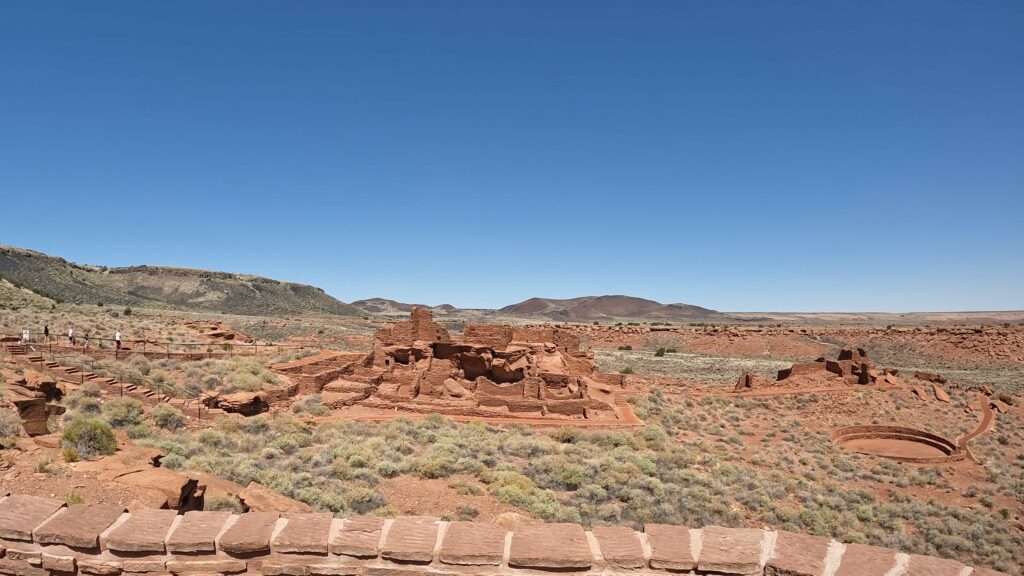
Indigenous Communities
The Sanagua, Cohonina, and Cayente Anasazi inhabited and flourished in this area. They grew crops, hunted wild game, and made pottery. The Anasazi were living on the water from the Wupatki Springs, unfortunately, which is now dry. They had to learn to “dry garden”. They enjoyed a diet of corn, beans, squash, seeds, and grains, plus fresh meat from hunting.
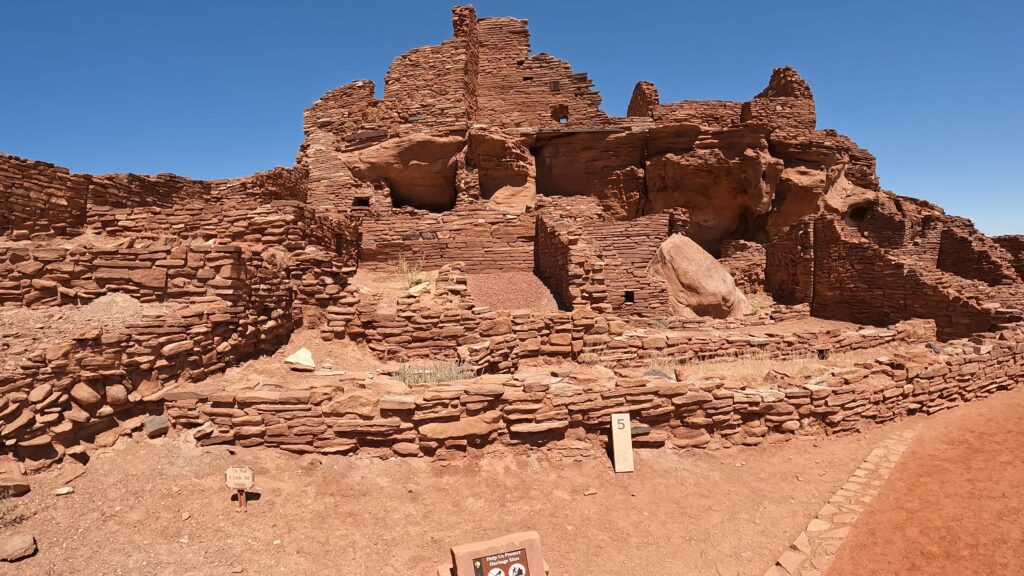
The area around Sunset Volcano Crater has been home to indigenous people for thousands and thousands of years. They were here even before the volcano erupted way back in 1085. The Hopi and Zuni elders, who are wise and respected members of their communities, still share stories about what it was like to witness the amazing fireworks when the volcano would explode. Can you imagine that? It must have been quite a sight!
A Littered Landscape
The area around Sunset Volcano Crater is covered in old volcanic cinder and spatter cones. What are those, you ask? Well, cinder cones are formed when volcanic ash and rocks pile up around the volcano’s vent, creating a cone-shaped hill. Spatter cones, on the other hand, are formed when blobs of lava are ejected from the volcano and harden into cone-shaped structures.
Where is the Wupatki National Monument Located?
The park is located about 30 miles north of Flagstaff. If in the Flagstaff, AZ area or driving to or from Page, AZ, or another location on AZ Hwy 89, the turnoff is to the East on Hwy 89. Sunset Crater is nearby so can bundle both attractions together.
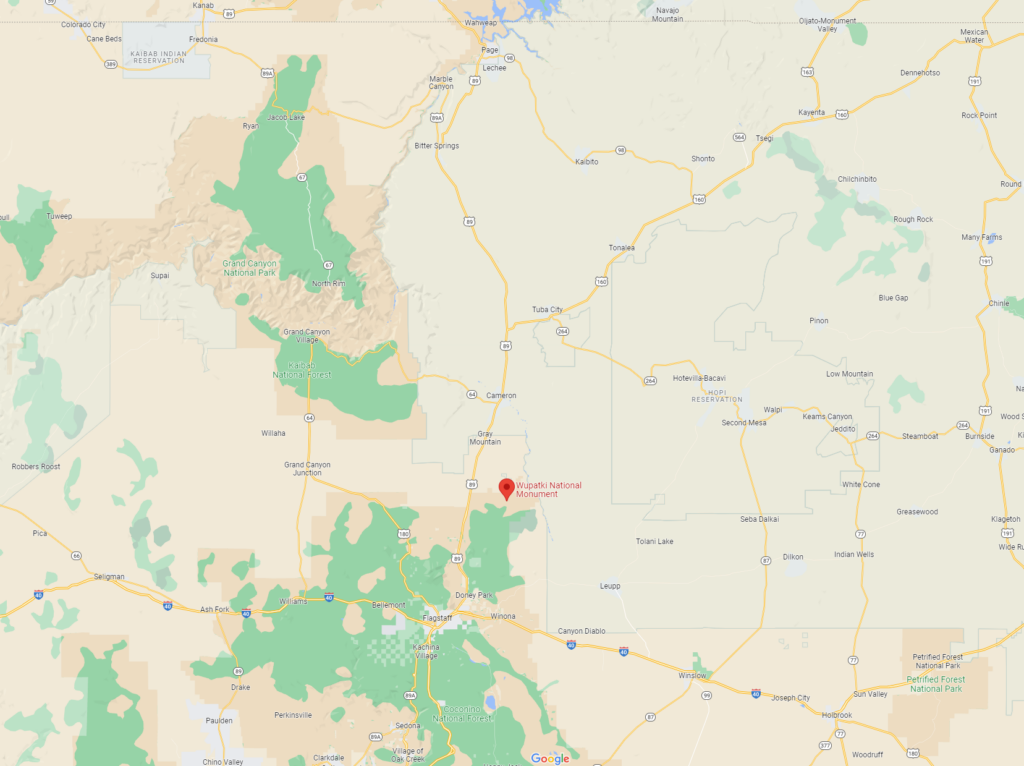
Where is the Wupatki Pueblo Site Located?
If coming in from the North Entrance to the National Monument, you will drive past the Lomaki and Box Canyon Pueblos first on your left, then the Citadel and Nalakihu Pueblo site on your right, and next you will come to the Park’s Visitor Center. If coming from the South Entrance, closer to Flagstaff, this is a 21-mile drive to the Wupatki Visitor Center of US-89.
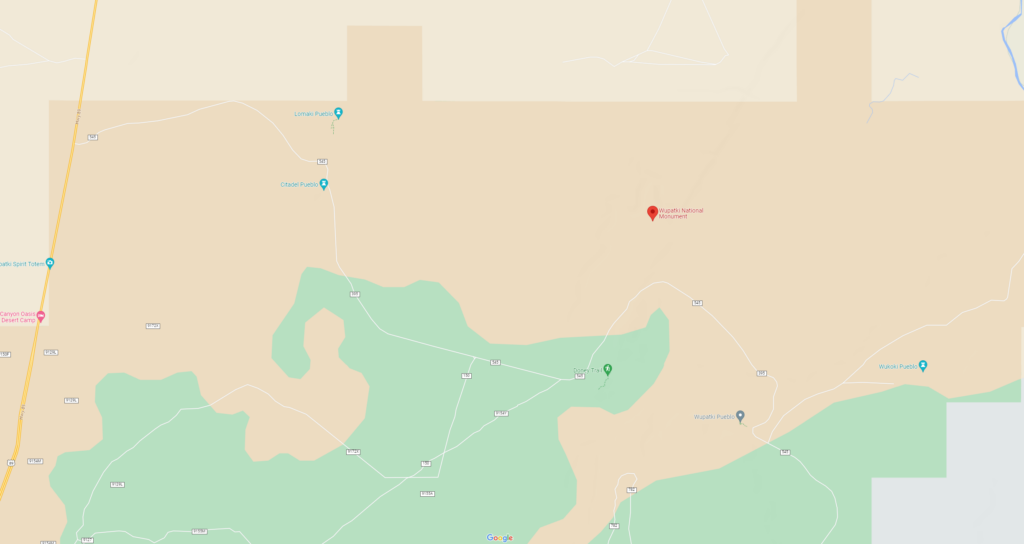
The following map gives you a close-up look at the Visitor Center and the Wupatki Pueblo complex area including the trails and pueblos.
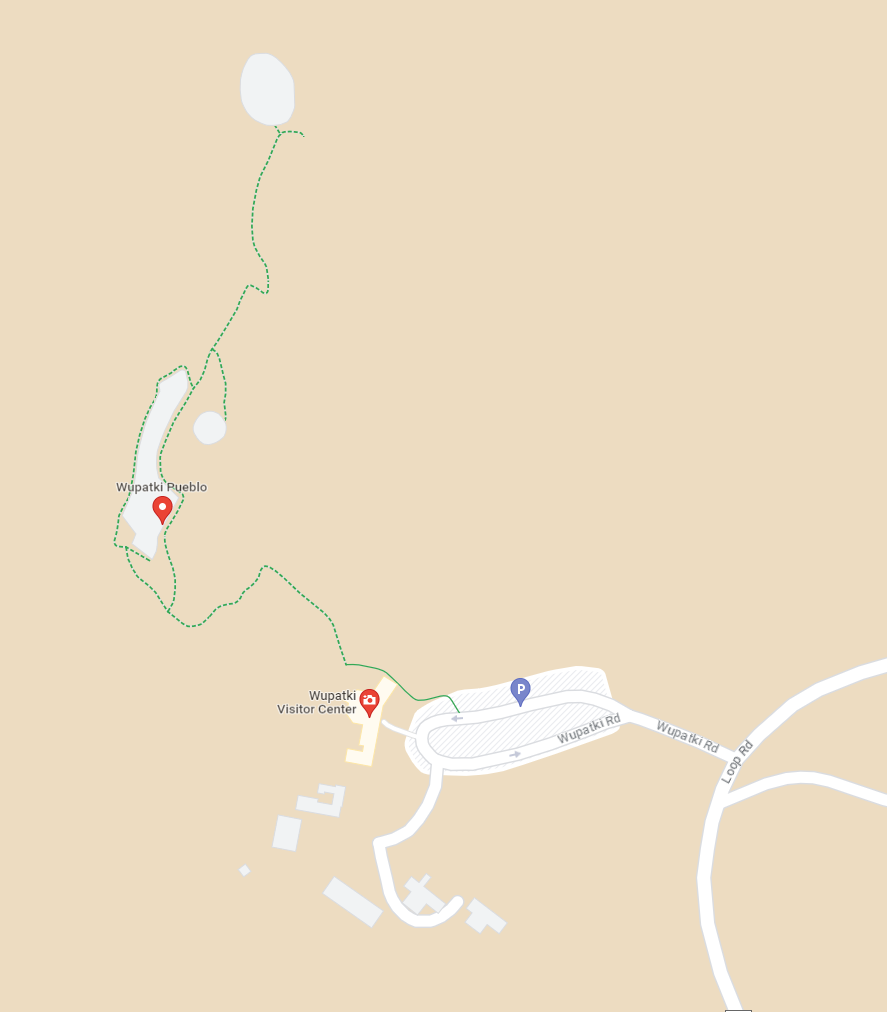
Wupatki Pueblo Site
Wupatki translated from the Hopi language means “long-cut house”. The structure is a multi-story pueblo dwelling comprising over 100 rooms. It has a kiva, which is a type of shared community room. The main Wupatki Pueblo represents the largest building site for nearly 50 miles.
Construction
Construction materials include flat, red sandstone pieces stacked and moored together. Logs were used for roof and floor beams. The use of logs from the mountain forests for roof and floor beams in the construction of these structures showcases the resourcefulness and adaptability of the ancient inhabitants.
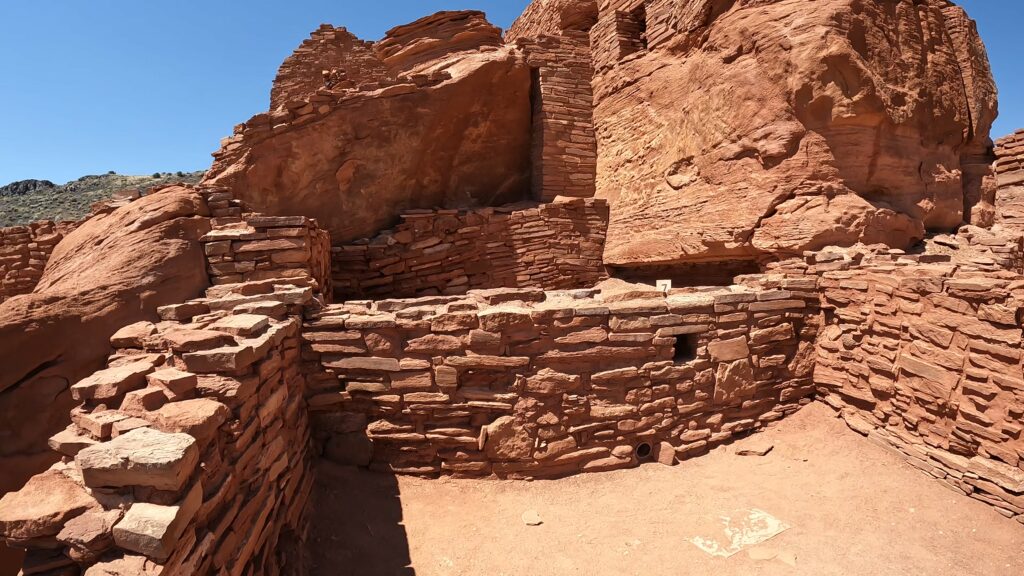
Surrounding each central living structure were a series of pithouses and smaller pueblos. These additional dwellings served various purposes, such as living space, storage, workshops, or even ceremonial spaces. The pithouses, dug partially into the ground, offered protection from harsh winds and helped maintain a more stable temperature throughout the year.
Water
In those times, water sources played a crucial role in determining settlement locations. As the communities relied heavily on the availability of water, the proximity to these springs was essential for their survival. The abundance of water not only provided for their basic needs but also supported agriculture and other economic activities. The strategic placement of the buildings close to the springs ensured easy access to this vital resource. Also near each Pueblo structure is a large catch pond to catch rainwater for irrigation.
However, with the changing climatic patterns or other unknown factors, the once reliable springs started to dry up or fluctuate in their water flow. This sudden shift in environmental conditions must have presented significant challenges for the communities. They would have had to adapt their lifestyles, find alternative water sources, or develop new techniques to conserve and manage the limited water supply.
Trade
Artifacts provided evidence of a thriving trade between this community with other communities for hundreds of miles. Items traded include copper bells, shell bracelets, food/vegetables, and macaws.
Blow Hole
Down the trail, near the second ball court, is a geologic feature called a blowhole. Air flows in and out from the ground coming from cracks and crevices in the crust of the earth caused by earthquakes. You could really feel the air flowing out of the hole. There are times, according to the sign, that the flow can be reversed. It can be sucking air back into the ground.
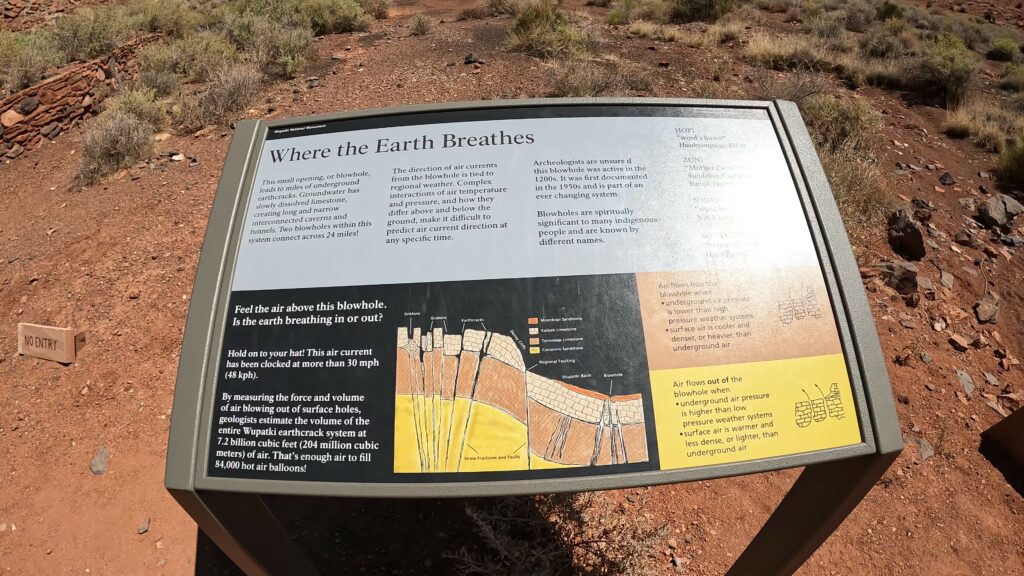
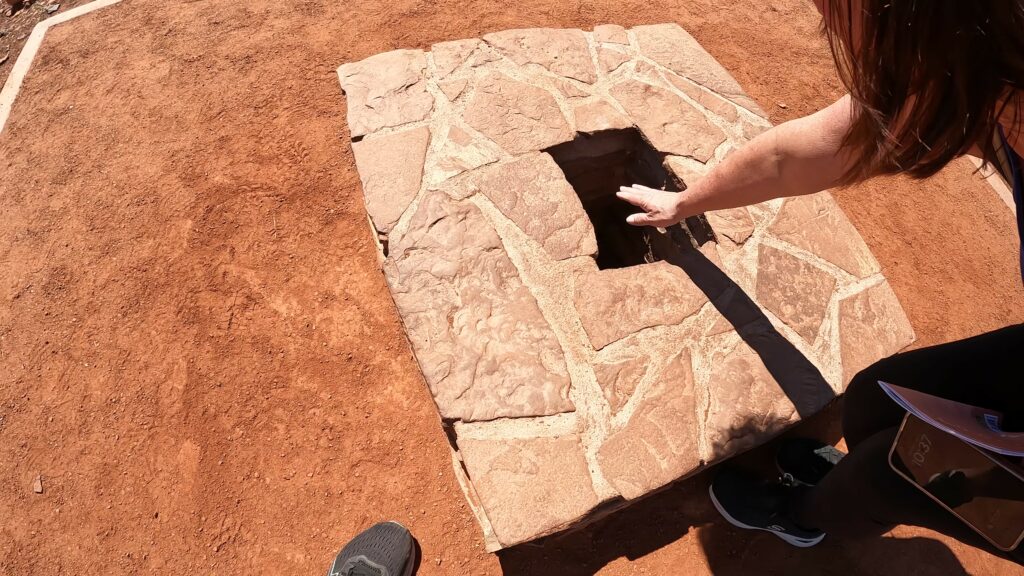
Hojokam-style Ball Court
The complex contains the northernmost Hojokam-style ball court ever discovered in North America. The Hohokam game rules are a mystery, but teams probably moved a rubber ball back and forth across the playing area. The ballcourt may also have been used for dances or other ceremonial activities.
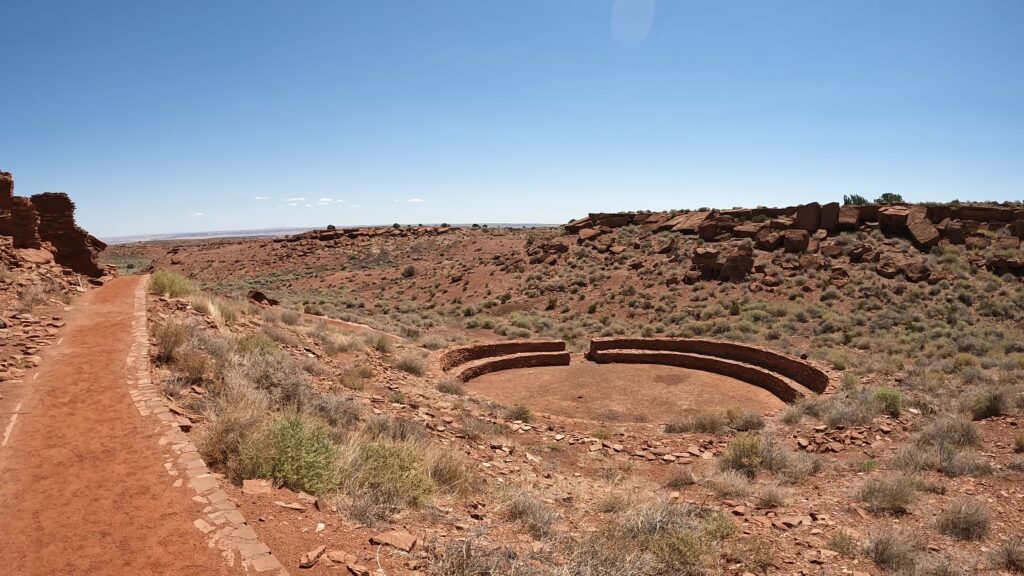
What to Expect at the Wupatki Pueblo Site?
The trail to the Wupatki Pueblo site is hard-packed gravel with a few sections of slickrock. There are several interpretive signs along the trail that teach a few things about what you are looking at.
The Visitor Center has a well-laid out path that has about a 0.8-mile round tip. There’s a bit up and down you will have to walk but is not too bad. It is considered an easy hike and the elevation is at 4,821, up to 4,903 feet.
Plan to spend at least an hour to an hour and a half on this large-scale, multi-level Pueblo community.
For the truly adventurous, a variety of guided and off-trail ranger-led hikes are offered from November to March, ranging from moderate to very strenuous. These hikes give visitors the opportunity to see petroglyphs and different Pueblo structures.
The Wupatki Photos


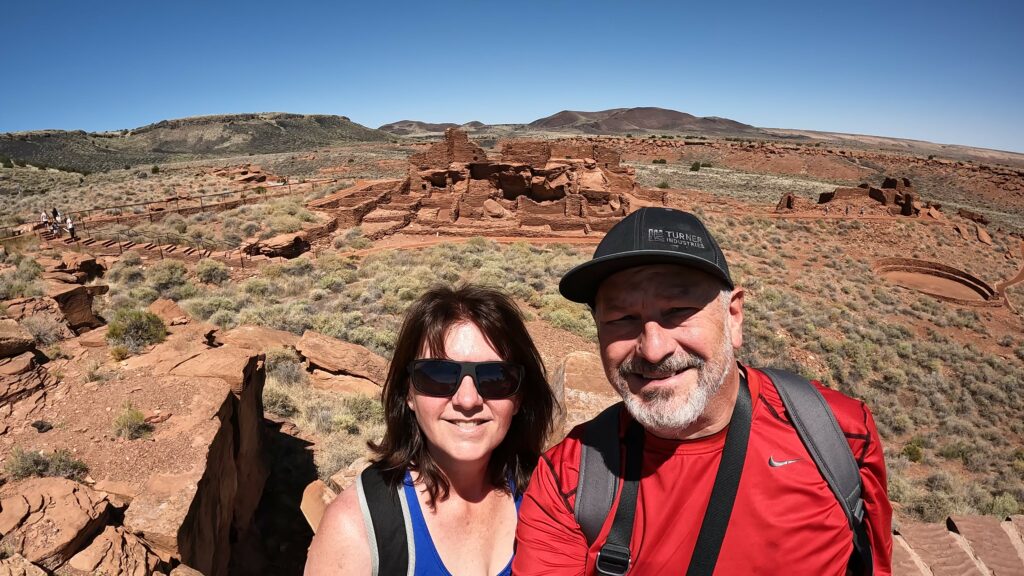
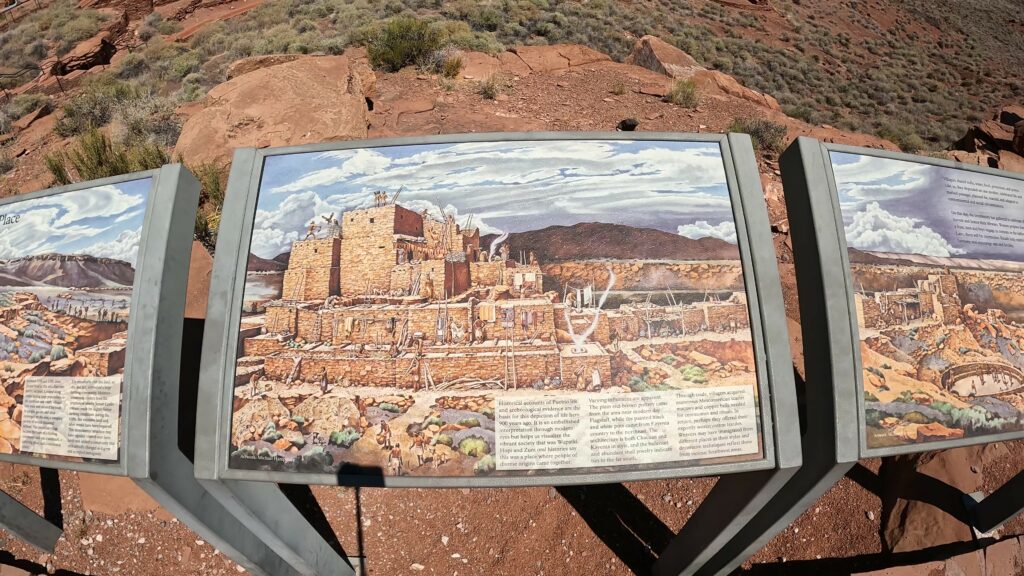
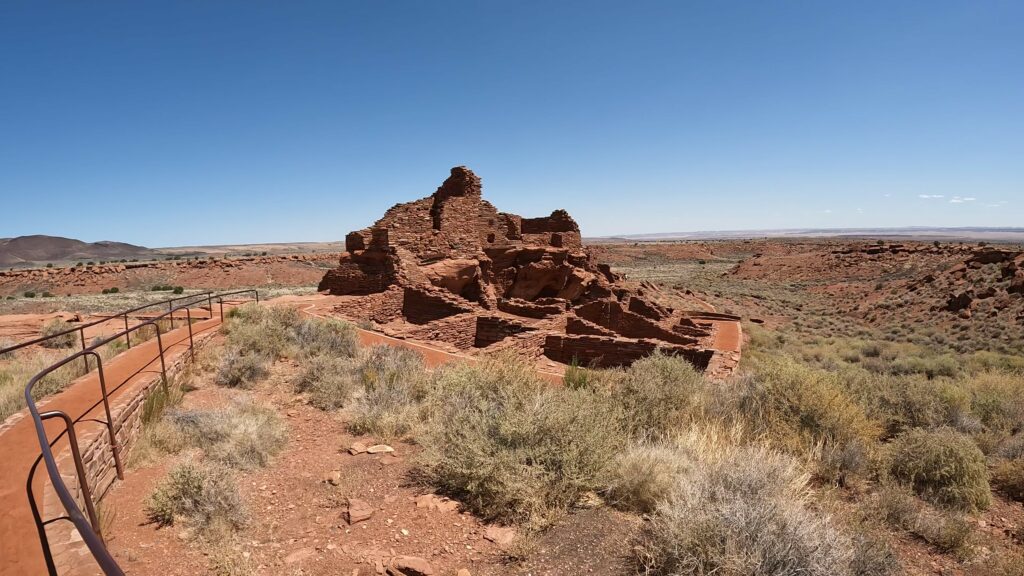
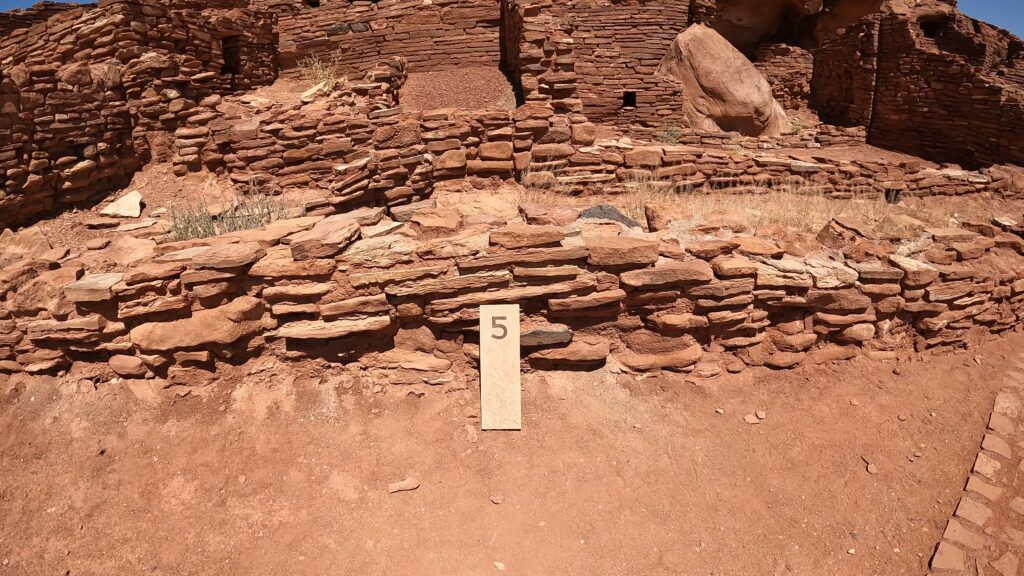

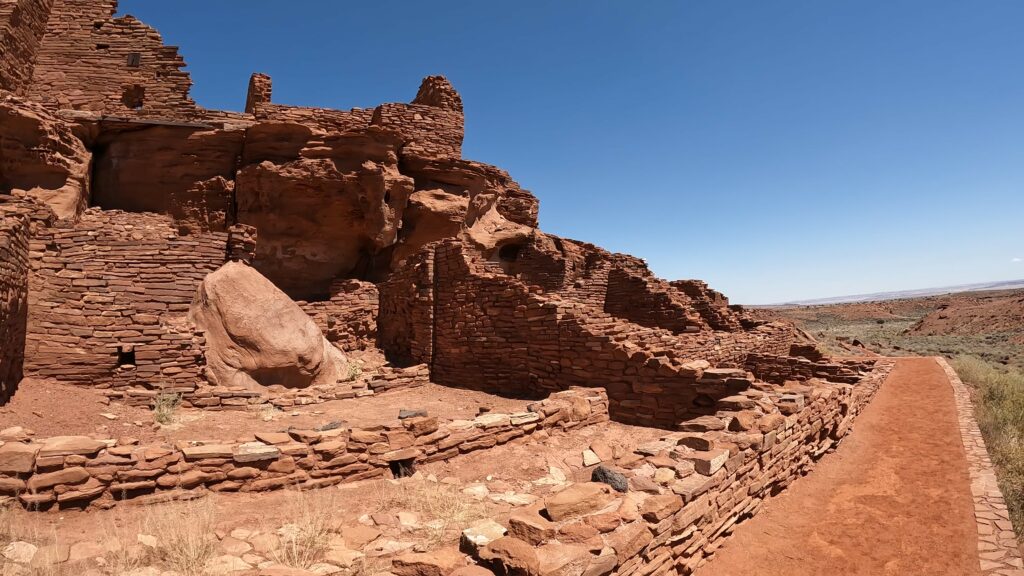
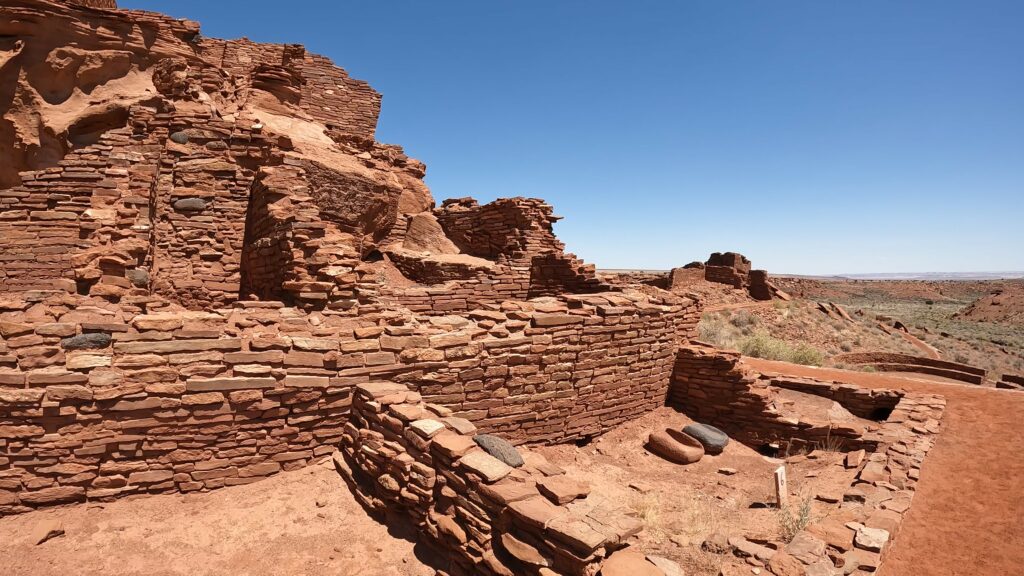
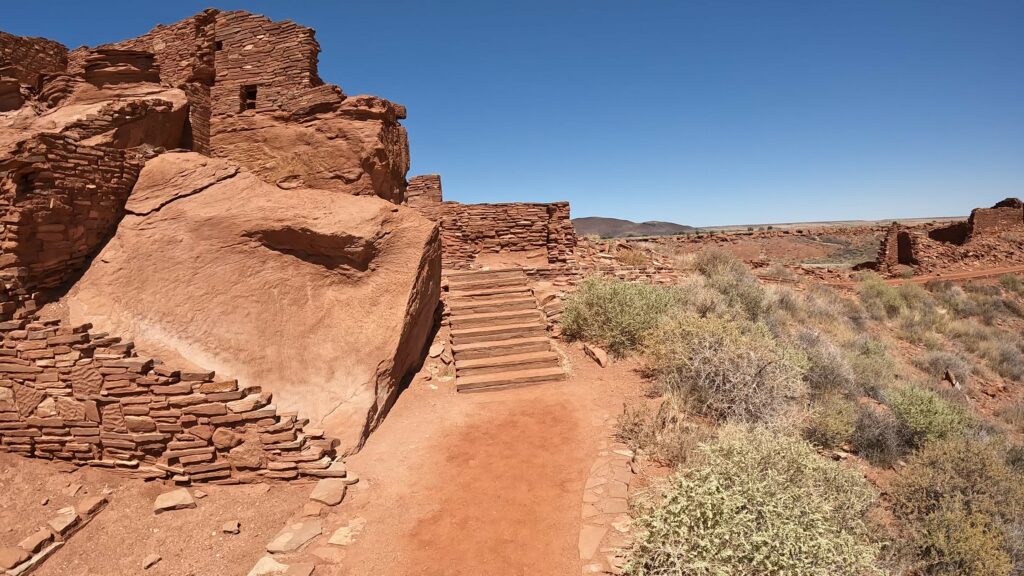


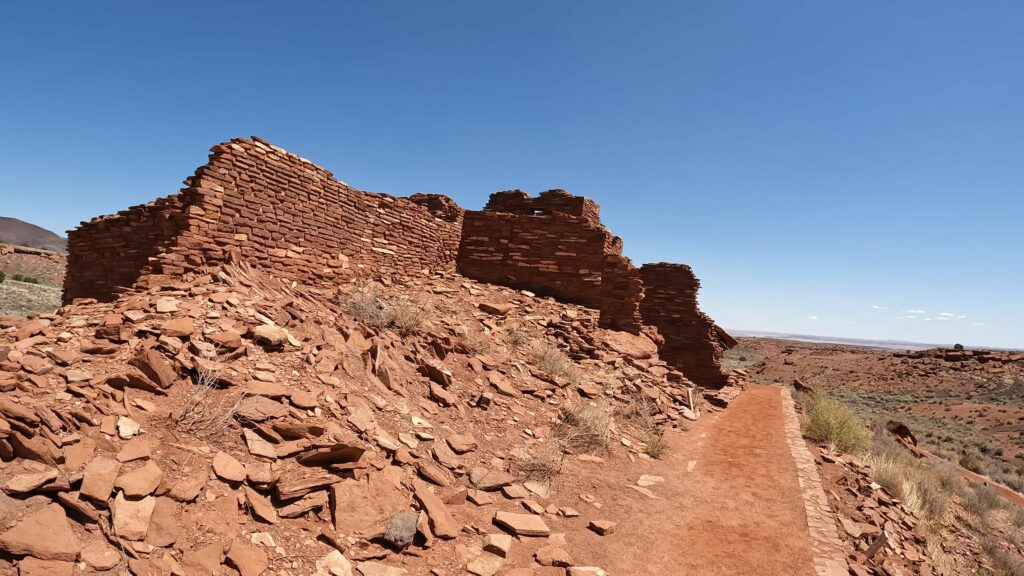
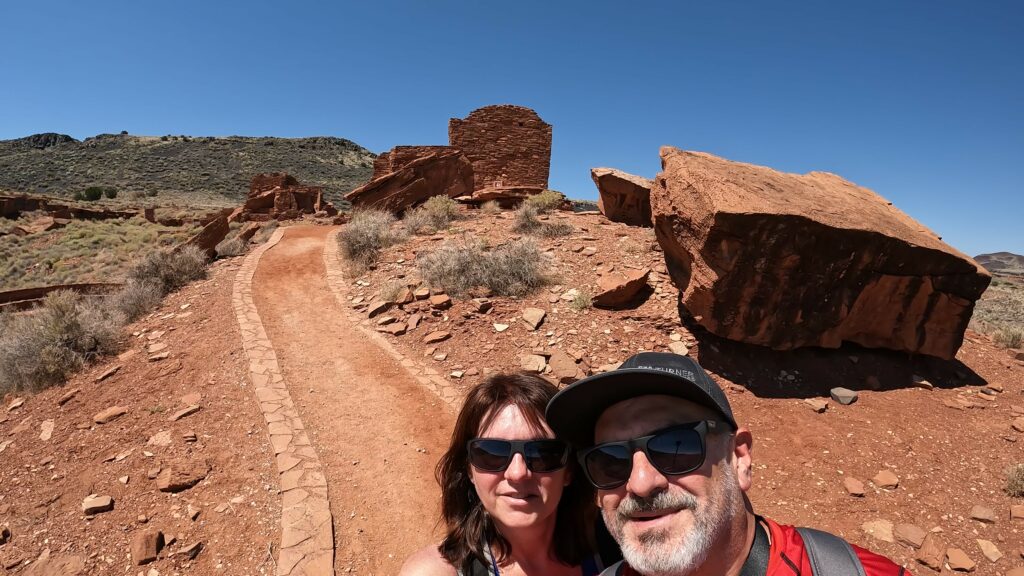
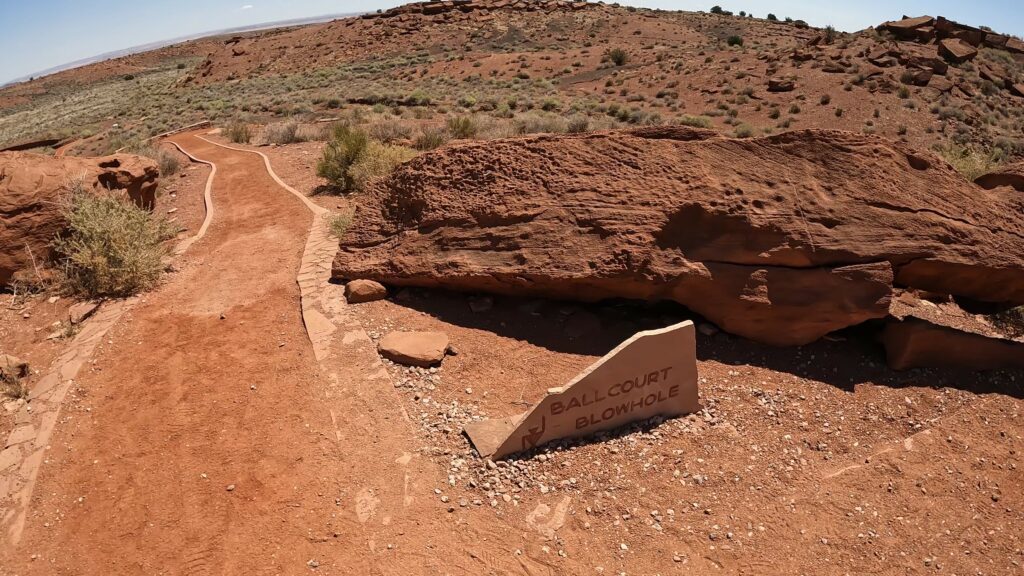
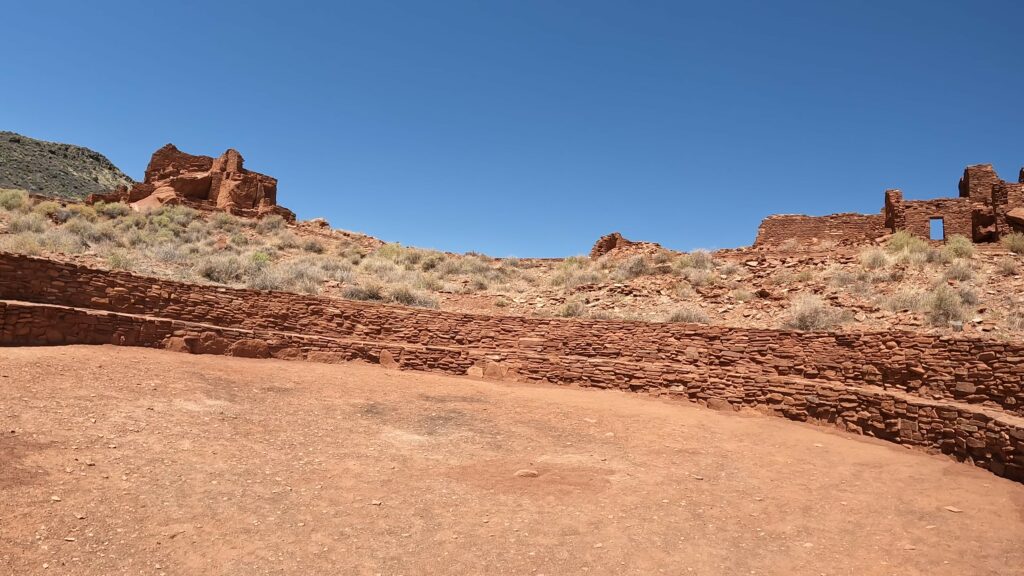
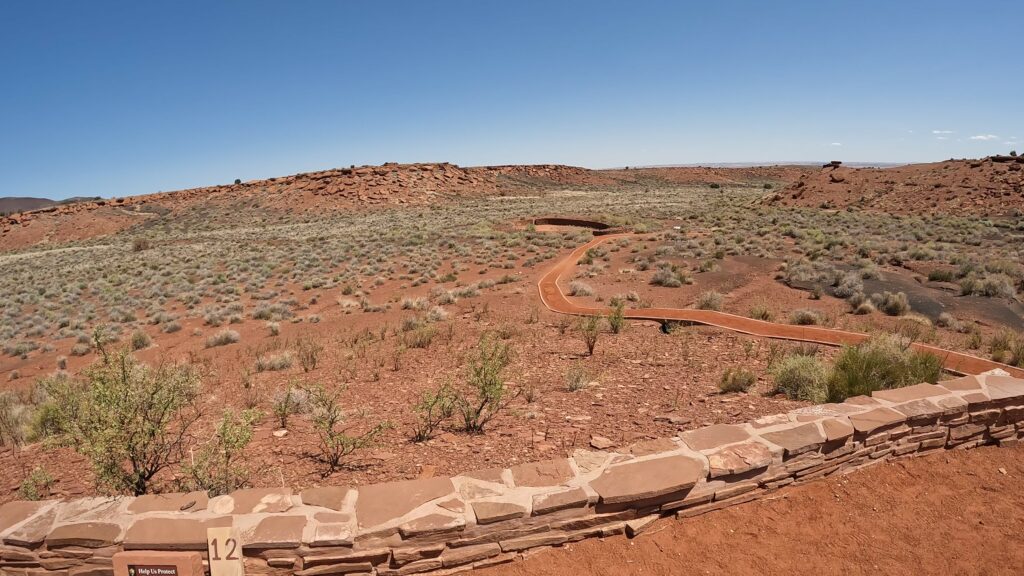


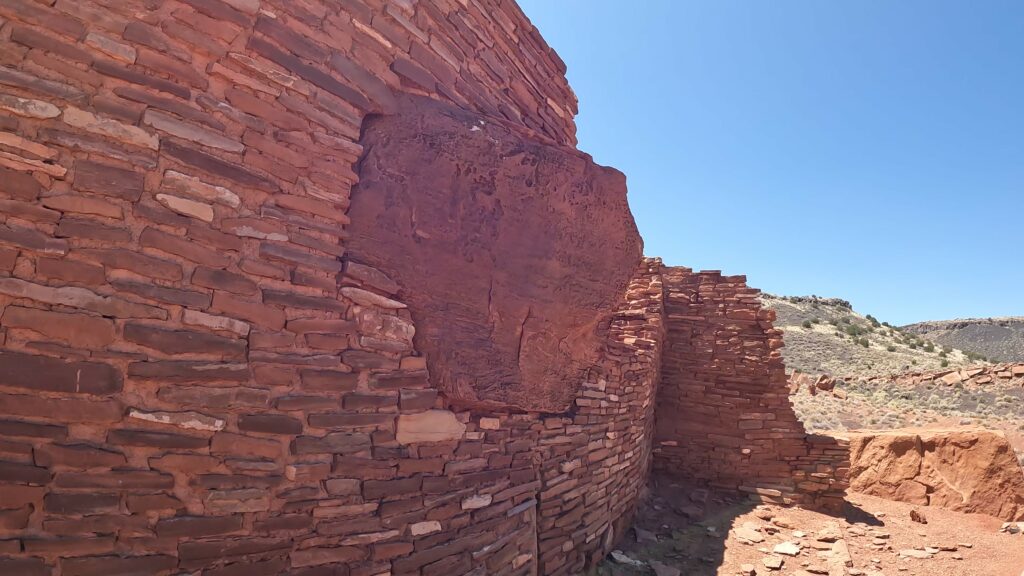
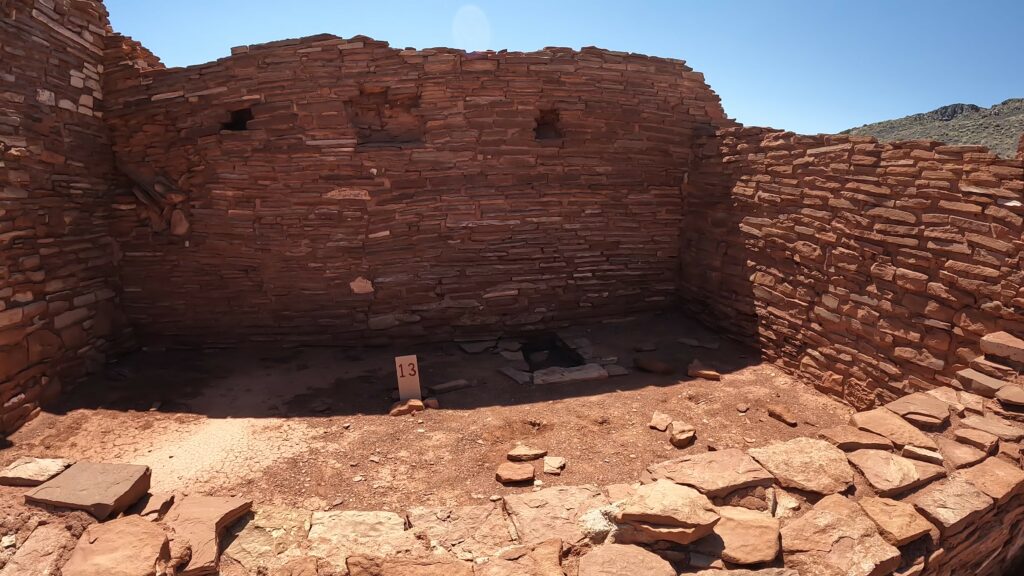
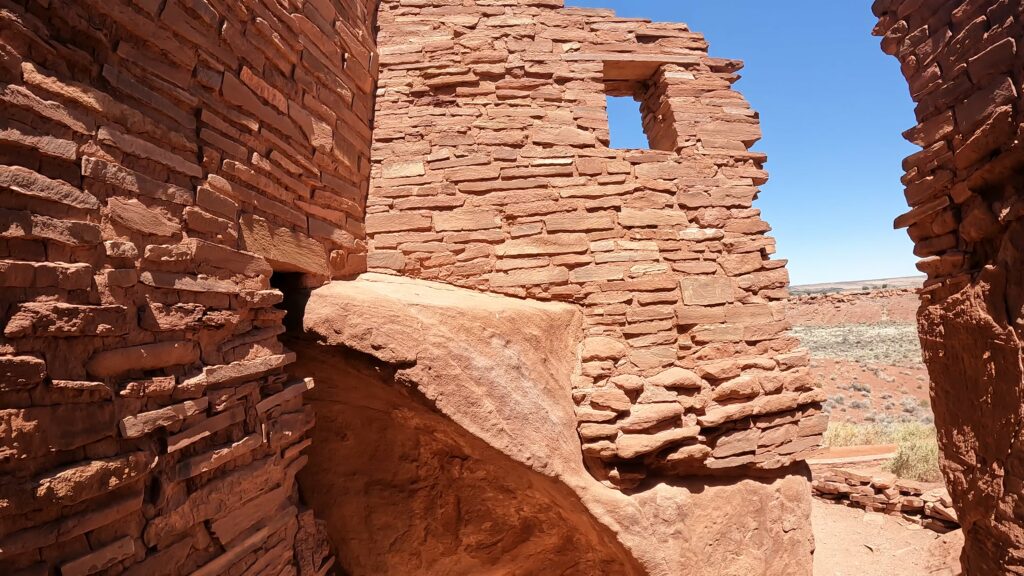
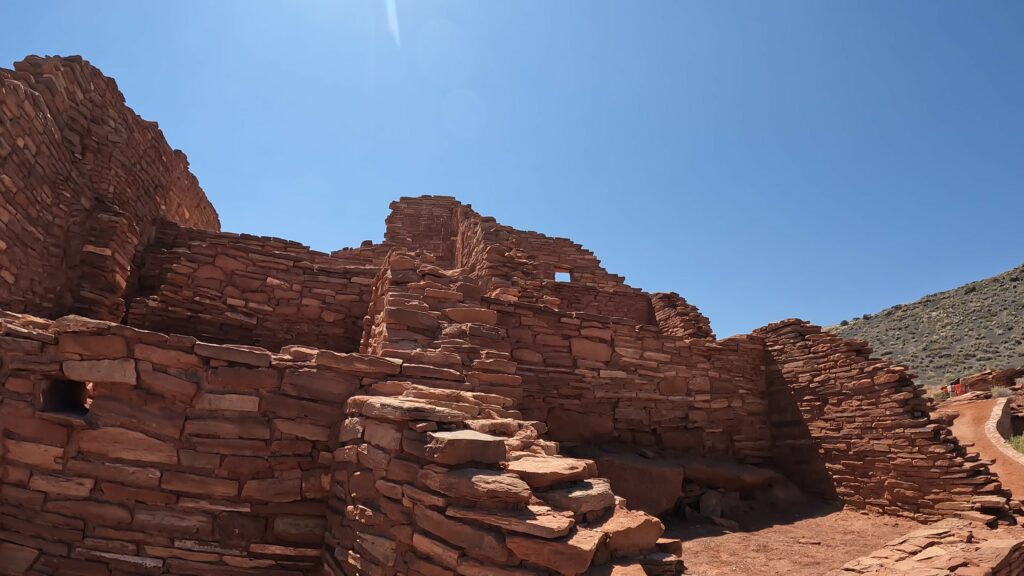
Erin and I love history and we love being outdoors. Visit Wupatki National Monument as it is well worth the drive. You will thoroughly enjoy the history and the short hikes. The bonus of going to the Wupatki National Monument is the fact that the Sunset Crater National Monument is right next door. So you get two National Monuments in one shot.
Check out our post on the Sunset Crater National Monument. Again, package these two together.
Click below to see a more detailed post on each set of pueblos:
If you like this content, I know you’re really going to enjoy the Montezuma Castle and Well National Monument posts, and all the epic Arizona trip videos we have to help you plan your next epic trip with your significant others.

Leave a Reply